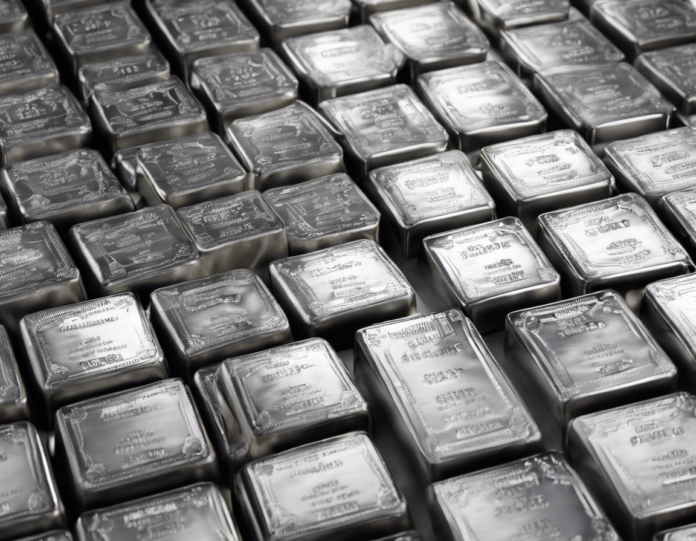The price of silver has always been a topic of interest for investors, collectors, and anyone interested in precious metals. As a popular investment commodity and an essential component in various industries, the silver market is dynamic and often influenced by a myriad of factors. In this article, we will delve into the latest trends and analysis of the silver price, exploring what drives its value, recent performance, and what the future may hold for this precious metal.
Factors Influencing Silver Price
1. Supply and Demand: The fundamental principle of supply and demand plays a significant role in determining the price of silver. The supply of silver is influenced by factors such as mining production, scrap metal recovery, and government sales. On the demand side, industrial usage, jewelry, and investment demand all contribute to the overall demand for silver.
2. Economic Indicators: The state of the economy has a direct impact on the price of silver. During economic uncertainty, investors often turn to precious metals like silver as a safe haven investment, driving up demand and prices. Conversely, in periods of economic stability, the demand for silver may decrease, leading to lower prices.
3. Inflation and Currency Strength: Silver is often seen as a hedge against inflation. As the value of currency decreases due to inflation, the price of silver typically rises. Additionally, the strength of the US dollar can also influence the price of silver, as it is traded in dollars. A weaker dollar usually leads to higher silver prices.
4. Geopolitical Events: Geopolitical tensions and global events can also impact the price of silver. Uncertainty and instability in major economies or conflict regions can drive investors towards safe-haven assets like silver, pushing prices higher.
Recent Performance and Trends
The silver market has experienced volatility in recent years, reacting to various economic indicators and global events. In 2020, the price of silver surged to a seven-year high as the COVID-19 pandemic swept across the globe, causing economic uncertainty and prompting investors to seek refuge in precious metals.
However, the silver price saw a pullback in early 2021 as vaccine rollouts and economic recovery efforts boosted market confidence. Despite this, many analysts remain bullish on silver’s long-term prospects, citing factors such as green energy demand and inflation concerns as potential drivers of higher prices.
Future Outlook for Silver Price
Looking ahead, the future of the silver price remains uncertain, as it is influenced by a multitude of variables. Factors such as global economic growth, monetary policies, and technological advancements will continue to shape the silver market in the coming years.
Analysts are divided on the long-term outlook for silver, with some predicting further price increases driven by increased industrial demand, particularly in the renewable energy sector. On the other hand, concerns about overvalued markets and potential economic downturns could put downward pressure on silver prices.
In conclusion, while the price of silver is subject to fluctuations and uncertainties, it remains a valuable asset for investors and a critical material for various industries. Keeping a close eye on market trends and economic indicators can help investors and collectors make informed decisions about silver as part of their investment portfolio.
Frequently Asked Questions (FAQs)
1. Is silver a good investment?
– Silver is considered a good investment by many due to its historical value and diversification benefits in investment portfolios.
2. How is the price of silver determined?
– The price of silver is determined by factors such as supply and demand dynamics, economic indicators, and geopolitical events.
3. What are the main uses of silver?
– Silver is used in a variety of industries, including electronics, photography, jewelry, and medical applications.
4. How can I invest in silver?
– Investors can buy physical silver, invest in silver ETFs, or trade silver futures through commodity exchanges.
5. Is silver more volatile than gold?
– Historically, silver has been more volatile than gold due to its industrial demand and smaller market size.
6. What are the risks of investing in silver?
– Risks of investing in silver include price volatility, market speculation, and economic factors.
7. Can silver prices go down?
– Yes, silver prices can fluctuate and go down due to various market conditions and economic factors.
8. How does silver perform during economic crises?
– Silver is often seen as a safe-haven asset during economic crises, with prices tending to rise in times of uncertainty.
9. What is the historical performance of silver?
– Historically, silver has outperformed many other asset classes over the long term, making it an attractive investment for some.
10. How can I stay updated on the latest silver price trends?
– You can stay updated on the latest silver price trends by following financial news outlets, silver investment websites, and market analysis reports.
In summary, understanding the factors that influence the price of silver, monitoring market trends, and being aware of investment risks can help individuals make informed decisions when it comes to investing in this precious metal. Whether you are a seasoned investor or a beginner, staying informed and seeking advice from financial experts can guide you in navigating the silver market effectively.


